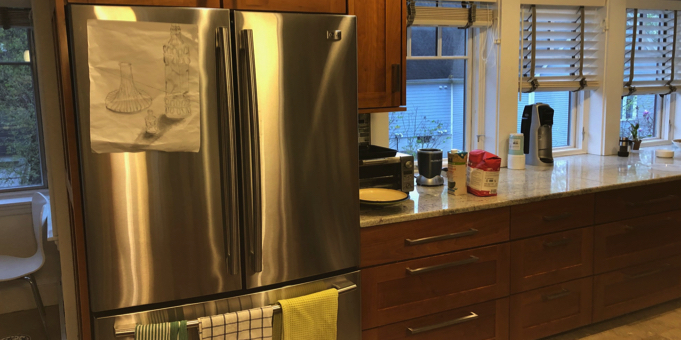The EnergyGuide label on new refrigerators tells you how much electricity in kilowatt-hours (kWh) a particular model uses in one year. The smaller the number, the less energy the refrigerator uses and the less it will cost you to operate. Also, a new refrigerator with an ENERGY STAR label uses at least 15% less energy than non-qualified models, 20% less energy than required by current federal standards, and 40% less energy than the conventional models sold in 2001.
- Don’t keep your refrigerator or freezer too cold. Recommended temperatures are 35°-38°F for the fresh food compartment and 0° F for separate freezers for long-term storage.
- Check the refrigerator temperature by placing an appliance thermometer in a glass of water in the center of the refrigerator. Read it after 24 hours. Check the freezer temperature by placing a thermometer between frozen packages. Read it after 24 hours.
- Make sure your refrigerator door seals are airtight. Test them by closing the door over a piece of paper or a dollar bill so it is half in and half out of the refrigerator. If you can pull the paper or bill out easily, the latch may need adjustment, the seal may need replacing, or you may consider buying a new unit.
- Cover liquids and wrap foods stored in the refrigerator. Uncovered foods release moisture and make the compressor work harder.
- Regularly defrost manual-defrost freezers and refrigerators; frost buildup decreases the energy efficiency of the unit. Don’t allow frost to build up more than one-quarter of an inch.
Look for the ENERGY STAR label when buying a new refrigerator. Select a new refrigerator that is the right size for your household. Top freezer models are more energy efficient than side-by-side models. Features like icemakers and water dispensers, while convenient, do use more energy.
https://www.energy.gov/energysaver/appliances-and-electronics/kitchen-appliances



Recently on Twitter